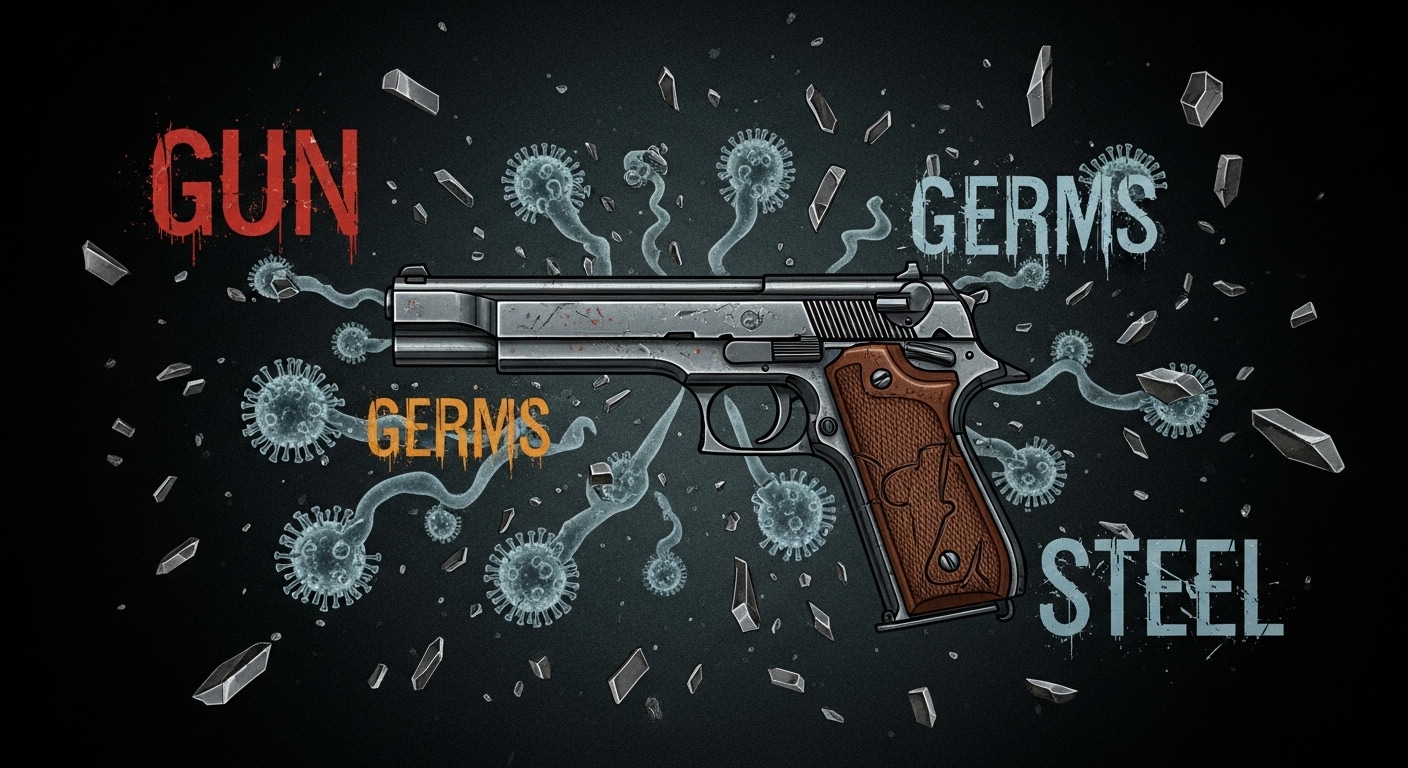
Guns, Germs, and Steel is a cultural theory book published in 1997 by Jared Diamond, an American physiologist and geographer. This book addresses the fundamental question of inequality in human civilization, namely why some societies developed faster and became more powerful than others.
Main content and key argument
• Causes of inequality in civilization
The author argues that the reason Eurasian civilization developed faster than civilizations on other continents and was eventually able to conquer indigenous societies in the Americas, Africa, and Oceania was not due to racial, intellectual, or moral superiority, but due to differences in ‘geographic environment’.
• Meaning of Guns, Germs, and Steel
‘Guns’ in the title refers to weapons (technology), ‘germs’ refers to infectious diseases (pathogens), and ‘steel’ refers to metal (especially the Iron Age civilization). These three forces directly enabled Europe to conquer the New World, but the fundamental background for their development is believed to be the differences in the environment of each continent, especially in food production, domestication, and crop cultivation.
• Geographic factors and development of civilization
The author explains that environmental factors such as the axis of the continent (east-west vs. north-south), climate, distribution of crops and livestock, population density, and the possibility of technology diffusion determined the speed and direction of the development of human civilization. For example, Eurasia was widely spread from east to west, so agricultural technology, crops, and livestock could easily spread, while America and Africa were long from north to south, making such diffusion difficult.
• Domestication and pathogens
Eurasia had many domesticated animals, which led to dense populations and the occurrence of infectious diseases. Europeans adapted to these pathogens over a long period of time and developed immunity, but the natives of the New World were unable to do so, and suffered greatly from pathogens from Europe.
• Anna Karenina Law
The Anna Karenina Law is cited to mean that for domestication or crop cultivation to succeed, many conditions must be met, and if even one is lacking, it will fail.
Significance and Influence
• Guns, Germs, and Steel criticizes the existing theory of racial and biological superiority, finds the development of civilization in environmental and geographical factors, and presents a new perspective on the fundamental causes of global inequality.
• It won the Pulitzer Prize in 1998 and is a bestseller that has had a great influence worldwide.
Summary
Guns, Germs, and Steel is a book that finds the cause of the development of human civilization and inequality not in race or genes, but in the differences in geographical environment and the resulting food production, domestication, and technology diffusion. The author's core argument is that Europe came to dominate the world not because of its superiority, but because it was the first to acquire the tools of its environment: 'guns', 'germs', and 'steel'.
'노벨리스트' 카테고리의 다른 글
| Foods that are good to eat for lunch on a rainy day (1) | 2025.07.13 |
|---|---|
| Guide to idea commercialization support organizations in Jeollabuk-do (0) | 2025.07.13 |
| To my beloved daughter Minah (0) | 2025.07.13 |
| Who is Zhuangzi? (4) | 2025.07.12 |
| What is Dharma (Dharma Master, Bodhidharma)? (4) | 2025.07.12 |



